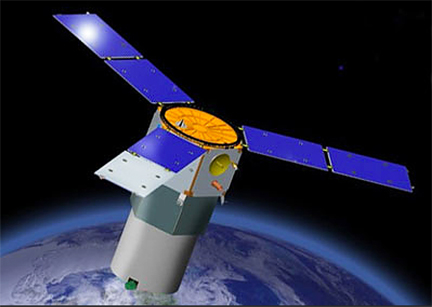 [SatNews] Today (April 30, 2012) marked the end of Air Force Space Command's...
[SatNews] Today (April 30, 2012) marked the end of Air Force Space Command's...
...Tactical Satellite 3 after it de-orbited into, and burned up in, the Earth's atmosphere. TacSat-3, which had exceeded its expected lifespan by 20 months, was originally designed and launched as a one-year experimental satellite on May 19, 2009. Although not designed as an operational asset, due to its longevity and potential to provide operational support to the warfighter, it transitioned to an operational asset June 12, 2010, and ended its operational mission Feb. 15, 2012.
TacSat-3 was the first, on-orbit, Department of Defense intelligence, surveillance and reconnaissance capability delivered to U.S. Strategic Command for their direct imagery support to worldwide combatant commanders. TacSat-3 complemented the wide array of Intelligence Community Combat Support Agencies and other space-based ISR systems which provide information to warfighters. TacSat-3's unique hyperspectral imaging (HSI) capability provided valuable information to combatant commanders.
The spacecraft is a pioneer of the emerging Operationally Responsive Space program, which was designed to meet the growing need of U.S. forces for flexible, affordable and responsive satellite systems.
ATK, as the spacecraft bus prime contractor, provided the complete bus system, which included the onboard command and data handling system, electrical power system, spacecraft bus primary structure, and interfaces to the launch vehicle and payload. Built and designed in just 15 months, ATK’s spacecraft bus met the TacSat-3 program goals of being operationally responsive, low-cost and with expected performance. The spacecraft also featured first-generation modular bus technology designed to provide flexibility for future small satellite missions. As a rapid, affordable experimental mission, the specification did not include a propulsion system to sustain long-term low-Earth orbit.
When compared to traditional imagery, hyperspectral data provides unique information regarding the objects imaged. For example, hyperspectral information can help recognize types of metal and concrete and can often distinguish between man-made and natural materials. This allows warfighters a better understanding of their area of operations, including adversary activities, intent and what risks may exist in conducting operations. Since TacSat-3's operational acceptance, AFSPC worked to quicken the "sensor tasking to product dissemination" process for delivering actionable information to the warfighter. The TacSat-3 capability produced approximately 100 hyperspectral imagery products per month, delivering key intelligence in hours-to-days after sensor tasking, which was 10 times faster than was done during the original experimental phase.
The TacSat-3 operators at the 1st and 7th Space Operations Squadrons at Schriever Air Force Base, Colorado, executed the overhead HSI collections in partnership with the Space and Missile Systems Center Research, Development, Test and Evaluation Support Complex (RSC) at Kirtland AFB, New Mexico, which uplinked specific taskings and other supporting commands to the satellite. After the end of TacSat-3's operational mission, satellite control and risk decision authority was turned over to the Space Development and Test Directorate, which runs the RSC, for testing and research and development purposes prior to satellite end of life.

